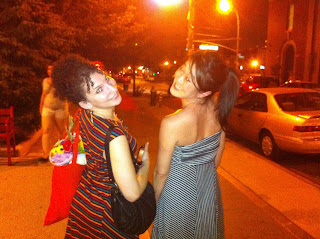I am not only artistically inspired by Isadora Duncan. I am also inspired by the various artists who influenced her—the poets, composers, and philosophers. And I’m inspired that she drew on such varied sources for creative fuel. As much as I love the specificity of Duncan’s dance technique, I also admire the example she set as an artist intent on carving out her own, unique expressive pathway.
I’ll never forget the first time I read Walt Whitman. In my sophomore English class in high school, we were assigned Leaves of Grass. I was so moved by the beautiful imagery and the ecstatic philosophical perspective conveyed through Whitman’s words. Indeed, more than once I have looked for Whitman “under my boot soles,” or, more appropriately, as a Duncan dancer, under my barefoot soles.
Another of Duncan’s poetic influences, who has long inspired me, is William Blake. As a sophomore at Yale, I took romantic poetry with Harold Bloom and became entranced by the “Book of Thel,” a multi-plate poem that builds off of the cycles of Songs of Innocence and Experience.
The “Book of Thel” is a bit of an allegory. Thel, one of the daughters of Mnemosyne, lives in the Vales of Har, the land of the unborn. Curious about the realm of experience, she converses with a cloud, a lily, and a clod of clay in order to get perspective on what it is like to cross the threshold of birth. In the final part of the poem, she basically gets a free pass to see what mortal life is really like. In Blake’s poem, she is overwhelmed and flees back to the safety of Har. Thel’s name, which is an ancient Greek reference that translates as “wish” or “desire,” is usually read as ironic, for Thel fails to satiate desire through her refusal of life.
Thel gives in to her fears, but I’ve often wondered what would happen if she was unable to return? Is there a way to confront fear of the unknown, of the pain and suffering that serve as counterpoints to ecstasy and joy? This is a huge theme for me artistically—how can one pass through the fire of experience and retain joy. Can an expansive, or innocent, life perspective survive the trauma of grief?
I believe it can. And I believe that the example of Duncan’s life and the technology of her dance technique offer models for the transformation of suffering into joy—for the simultaneous embodiment of full experiential knowledge and the retention of an innocent heart.
This month, I was thrilled to restage the trio version of my “Thel,” a choreography inspired by these questions that was originally staged in 2007 during my first year of graduate school. This time, I staged it for a showing at Austin’s One World Theatre, probably the most scenic performance space in the city, set in the hill country just off of Bee Caves Road. Yelena Konetchy and Kirsche Dickson joined me for this performance and our rehearsals focused on creating a strong sense of ensemble. Breathing together—acknowledging the power of this work to shift the energy of a space. I look forward to more collaborations with both of these dancers in the year to come.














































